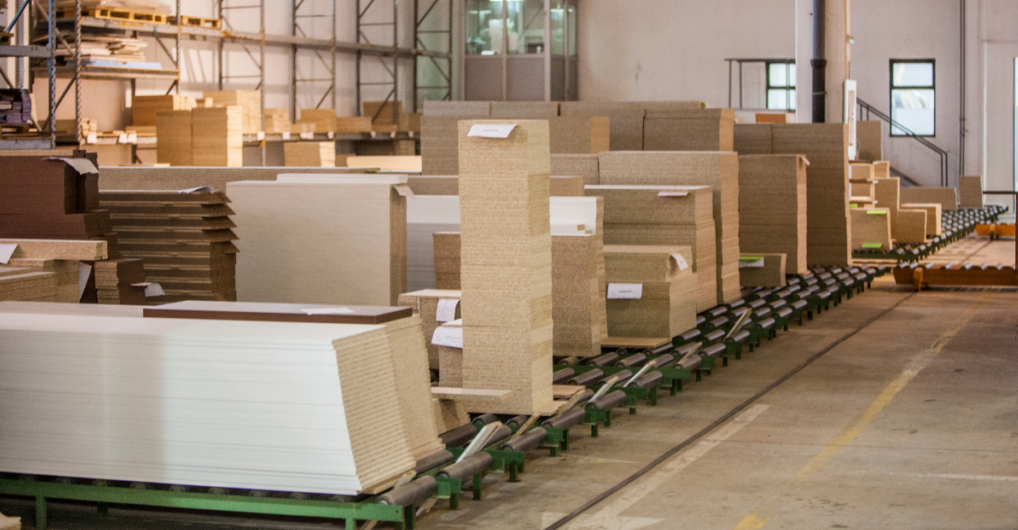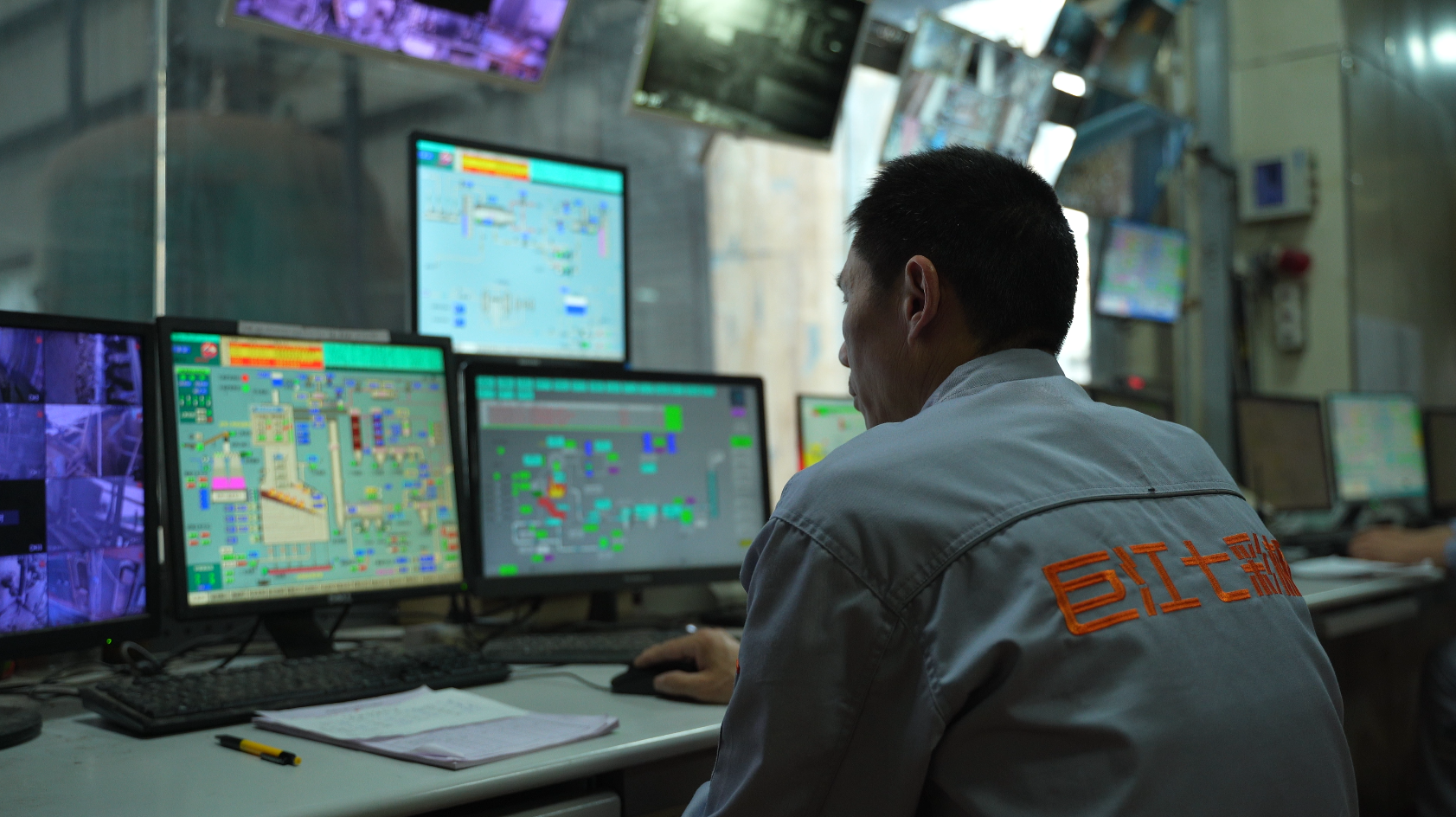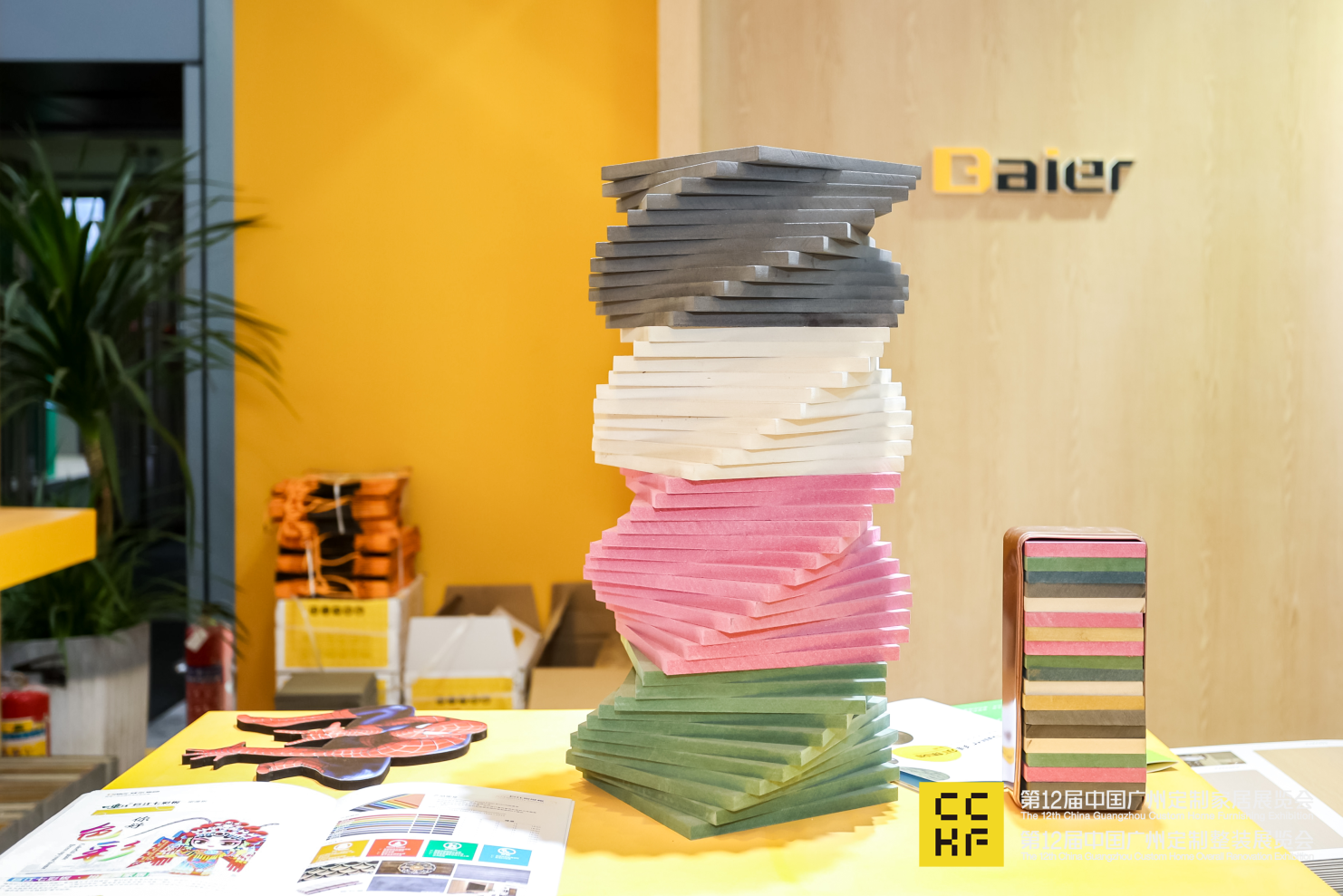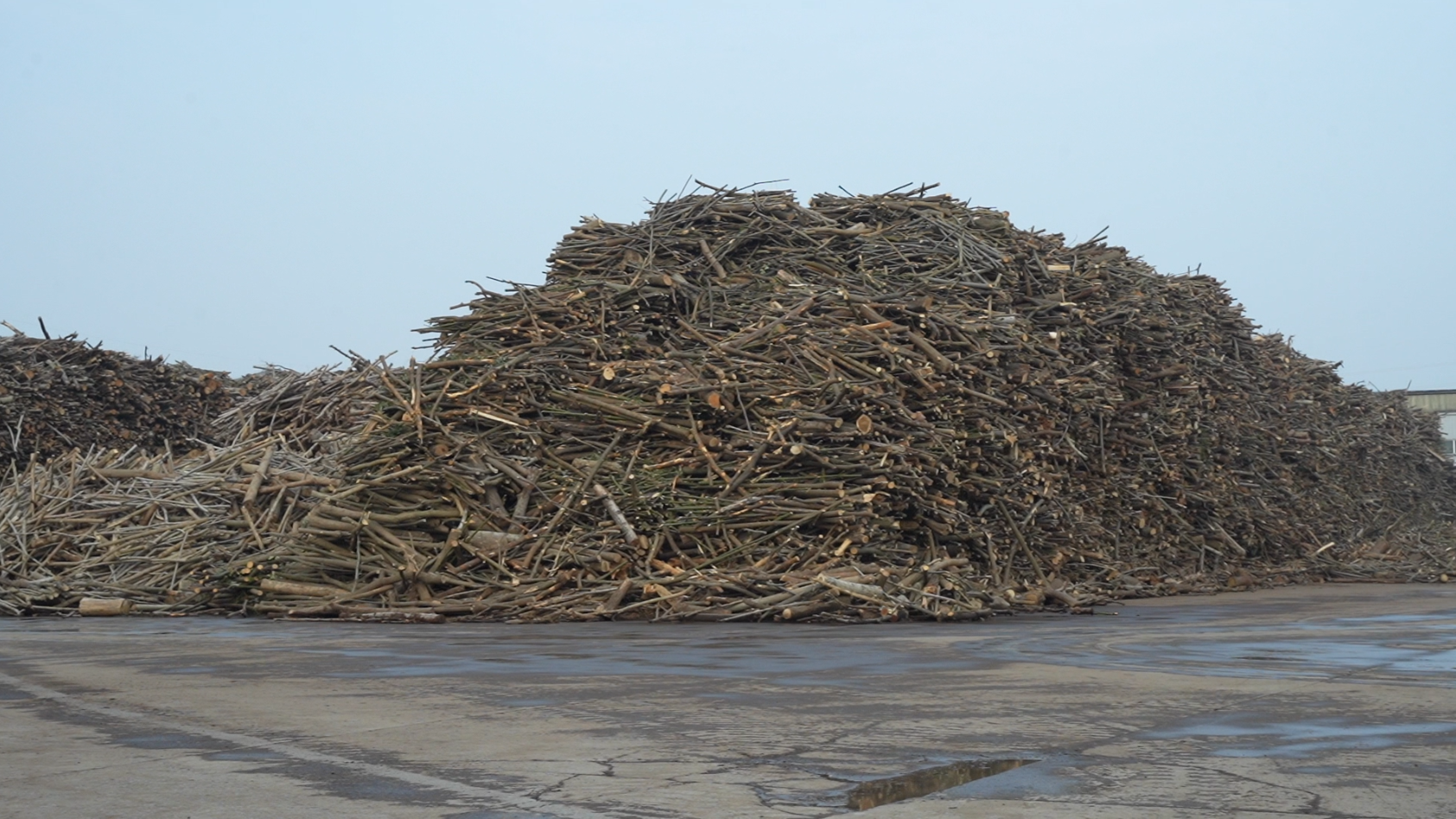China MDF Suppliers’ Massive Production Capacity and Cost Efficiency
From my experience, China’s medium density fiberboard (MDF) industry is a giant. It produces an incredible 47 to 69 million cubic meters of MDF. No other country even comes close to this amount. This massive output gives China a real edge in the global market. With China making about 54% of all MDF, I see them as the clear world leader in supply.
What Drives China’s MDF Production?
- Investing and Upgrading
China always invests in building new MDF plants. They also upgrade their older factories. I believe this constant improvement helps them produce huge amounts of MDF efficiently. - Economies of Scale
Because they produce so much, Chinese MDF makers benefit from economies of scale. In my opinion, this is their key advantage. It means each board costs less to make. This makes their MDF cheaper and more appealing to buyers at home and abroad.
Impact on World and Local Markets
In 2024, China’s MDF market was valued at USD 4.27 billion. I expect it to keep growing with a projected 9.4% CAGR. This growth comes from strong demand within China and a healthy export business.
For the 2023/24 period, I predict China will make up to 85% of all furniture in North Asia. A large amount of this furniture will use MDF made right there in China.
About 32% of the furniture made in China is sold to other countries. Key buyers are the US, Japan, and Europe. This export business requires even more MDF production.
Securing its Top Spot
China’s MDF production makes up about 18% of the world’s total capacity for primary wood materials. To me, this shows their strength in processing raw materials. It also proves their leadership in creating finished products. This really secures China’s spot as the top supplier of MDF boards in the world.
Competitive MDF Pricing and Cost Transparency in China’s MDF Supply

(Originated from Baier Jujiang Fiberboard Factory)
From my perspective, China leads the world’s MDF (medium density fiberboard) market. They achieve this by offering very competitive prices and keeping their cost structure lean and efficient.
How China Keeps MDF Prices Low
Market Price Advantage: As of June 2024, I see that the price for Chinese MDF boards is between US$400 and US$600 per cubic meter. I find this price range very appealing on the world market. It is a key reason global buyers choose China for their MDF needs.
Raw Material Sourcing: Based on my experience, China has plenty of wood residues. They also have a great supply chain for key materials like wood fiber, resin, and wax. Even with rising log costs worldwide from new rules, China’s sourcing methods help control production expenses.
Advanced Manufacturing Technology: I’ve noticed many Chinese MDF plants use modern equipment and smooth process flows. This helps cut manufacturing expenses. This technological advantage allows them to lower their unit costs and be strong competitors on price in export markets.
Cost Structure and Investment Insights
Lower Setup Costs: I believe building an MDF plant in China costs less than in other regions. For example, a complete MDF production line in China costs between US$300,000 and US$3 million per set. The price depends on the factory’s size and level of automation.
Comparative Industry Costs: For comparison, setting up a mid-sized MDF plant in India costs about ₹30-60 crore (US$3.6–7.2 million). The machinery itself is a large part of that cost, at ₹30-40 crore (US$3.6–4.8 million) for new production lines. This comparison shows China’s cost advantage in both equipment and daily operational costs.
Operational Efficiencies and Scale
Economies of Scale: China’s huge industrial capacity and high production volumes result in much lower costs for each unit. I think this is a major factor.
Labor and Logistics: The country makes efficient use of its labor force. Factories are close to major ports and transportation, and their logistics are well-organized. I suggest this is how they reduce their export and shipping costs.
Product Range: I’ve also observed that Chinese manufacturers make a wide variety of board thicknesses and quality levels. This allows them to supply to buyers who need a good value and those who want premium options.
Flexible Cost Management
Chinese manufacturers can adapt to changes in raw material prices. I recommend you see how they do it:
– They use many different sources and have large purchasing networks.
– They group factories in industrial zones to share resources and lower daily costs.
To put it simply, China’s market advantage comes from low production and setup costs. They also offer a wide range of MDF boards at globally competitive prices. In my opinion, this efficient cost base helps China perform better than suppliers from other countries. This is what keeps it at the forefront of the global MDF market.
Automation and Digital Tools Reshape MDF Manufacturing in China

(Originated from Baier Jujiang Fiberboard Factory)
In my view, China leads the world in MDF boards. This is mainly because of its modern manufacturing tech and its constant spending on new ideas. For the last 20 years, Chinese makers have purposefully improved their tools and methods. I believe this has helped them make more products. It has also made their MDF boards better in quality and function.
Modern Production Tools and Automation
Top-Notch Machines: I’ve noticed many Chinese MDF factories use automatic press lines. I think this sets a high standard for speed and production. For example, Guangxi Lelin Forestry Development Co. has a continuous press system (CPS+) that is 80 meters long. It’s the longest one I’ve ever heard of. It can produce 630,000 cubic meters each year.
Digital Tools and CNC Machining: I find the use of CNC machines very smart. These are computer-controlled tools. They allow for exact cuts and custom boards. This greatly reduces waste and makes every product consistent.
New Processing Methods: I see that modern Chinese plants use special mixing, pressing, and finishing steps. These steps make the boards more resistant to water and fire. They also improve soundproofing. This meets the needs of expensive building and design projects.
Using New and Green Raw Materials
Different Raw Materials: I noticed that to deal with environmental issues and high costs, top makers are getting creative. For example, Wanhua Ecoboard created MDF lines that use farm waste like rice straw. I find it impressive that their factory in Jiangxi Province can make 210,000 cubic meters a year using just straw. This seems like a great move for creating green, lasting products.
Constant Investment and Growth
Regular Machine Upgrades: Since the 2000s, I’ve seen Chinese MDF makers consistently bring in better and larger production lines. From my experience, this has led to a quick increase in how much they can make and better quality checks.
Huge Production Volume: By 2020, China’s MDF production hit around 53.47 million cubic meters. This was over 80% of all fiberboard made in the country. I believe this growth is a clear result of new technology and investment in more capacity.
A Country-Wide Industry
Where the Factories Are: I find it interesting that the MDF industry is in almost all Chinese provinces. The only exceptions are Tibet, Qinghai, and Ningxia. I think this wide spread helps local economies grow. It also makes the supply chain and delivery more efficient and adaptable.
In my opinion, all these improvements make a big difference. Things like automation, digital tools, new raw materials, and constant investment are key. Because of them, China strengthens its spot as the world’s top Mdf Board maker. It can meet the changing needs of customers at home and around the world.
Diverse MDF Solutions with OEM Customization Support

(Originated from Baier Jujiang Fiberboard Factory , Shot by Liu)
Chinese MDF manufacturers have earned a reputation in the global market for their wide product selection and strong customization abilities. From my perspective, this adaptability is central to China’s position as a world leader in medium density fiberboard supply.
Wide Variety of Sizes, Thicknesses, and Densities
Chinese producers can supply MDF boards in almost any size and thickness a buyer might need. Standard sizes such as 1220x2440mm and 1250x2550mm are widely available, but I have seen factories frequently fulfill requests for custom dimensions, like 2100x2800mm or made-to-order lengths and widths. Thickness ranges are highly flexible—from as thin as 0.5mm up to over 30mm or more. Densities generally span 630 kg/m³ to 1000 kg/m³, meeting different strength and application demands in construction, furniture, or interior projects worldwide and some special brands, like Baier, could do it to 1200 kg/m³.
Surface Finishes and Design Customization
Chinese MDF manufacturers provide a broad selection of surface designs and finishes. Clients can specify melamine papers with glossy, matte, or embossed textures. There is also a wide range of wood grain patterns (beech, oak, walnut, maple, teak, cherry) and even color or pattern options that can match a brand or particular design vision. In addition, many factories offer waterproof and fire-resistant MDF boards, catering to specialized needs and international safety standards.
Core Materials, Adhesives, and Certifications
A key advantage is the availability of different core materials, such as poplar, pine, or hardwood. Adhesive choices include E0, E1, E2, P2, MR, and advanced biomimetic adhesives. These enable compliance with strict health and environmental standards like CE, ISO9001, FSC, and CARB—making Chinese MDF a preferred option in regulatory-heavy markets such as Europe and North America.
Bespoke Production and Special Applications
I’ve noticed Chinese factories are uniquely equipped to craft MDF boards for nearly any special application. This includes sound-absorbing panels, decorative MDF shapes, and even structural boards for commercial builds. Their modern machinery and experienced workforce allow for rapid production turnaround and the ability to fill large, highly customized orders cost-effectively.
Diverse Furniture Solutions and Global Reach
China’s vast manufacturing network also supports an exceptional range of MDF furniture. Businesses worldwide can source everything from classic to ultra-modern styles, all precisely tailored for local markets and client tastes. High-quality finishes and made-to-order features are the norm, giving international buyers flexibility that most competitors cannot match.
Strong Industry Ecosystem and Integrated Supply Chain

China’s position as the top global supplier of medium density fiberboard (MDF) is anchored by its robust industry ecosystem and highly integrated supply chain. The country’s MDF manufacturing capacity is unmatched worldwide, with production centers spread across almost every province and region except Tibet, Qinghai, and Ningxia. This broad distribution creates a deeply interconnected production network and allows manufacturers to benefit from regional strengths and diverse economic conditions.
Nationwide Manufacturing Network and Raw Material Advantage
Chinese MDF factories are strategically located to align with national forestry strategies, such as “expanding in the east, governing in the west, using in the south, resting in the north.” This approach has led to continued record-setting growth for the MDF industry. The presence of advanced manufacturing equipment and access to abundant raw materials—like local and plantation wood—means Chinese producers can achieve both high output and reliable quality. Large-scale operations enable factories to fulfill major global orders quickly, providing international markets with a stable and speedy supply.
Cost Efficiencies and Policy Support
China’s vast scale brings major economies of scale, letting producers offer MDF boards at highly competitive prices versus other countries. This cost advantage is strengthened by national policy backing and ongoing upgrades to industry management systems. The government actively supports technological upgrades and process innovations, helping manufacturers stay flexible and respond swiftly to evolving market needs and customer specifications. Well-known brands like Dare Technology Group, Guangdong Huawei Co., Ltd., and Fujian Yong’an Forestry Co., Ltd. drive competitiveness through investment and advanced operational models, lifting industry standards across the board.
Integrated Supply Chain and Customization
A hallmark of China’s MDF sector is its fully integrated supply chain. Raw material suppliers, manufacturers, and exporters work closely together, ensuring smooth material flows, short lead times, and the ability to handle demand spikes from global buyers. Customization is also a strong suit—Chinese manufacturers routinely provide tailored solutions to meet specific requirements of clients in the US, Europe, Japan, and beyond. This agility, paired with the ability to support high-volume orders, makes China a preferred partner for businesses seeking both flexibility and reliability.
In essence, China’s leadership in the world MDF market is built on a foundation of an expansive industry ecosystem, a geographically distributed and efficient supply chain, modern manufacturing prowess, strong policy support, and proven abilities in customization and cost-effective mass production.
China MDF Suppliers Prioritize Sustainability and Resource Use
China’s MDF industry has made sustainability a priority, combining advanced resource utilization with large-scale, eco-friendly production to secure its global leadership. From my perspective, their approach is both practical and forward-looking, aligning strongly with tightening international environmental standards and the growing market demand for green materials.
Harnessing Recycled Inputs and Circular Economy Principles
Chinese MDF manufacturers widely use recycled wood fibers and water-based adhesives. In some advanced factories, this has resulted in about a 30% reduction in formaldehyde emissions—making the products safer and meeting health-focused export standards. By repurposing wood waste and offcuts into new MDF boards, China’s industry minimizes raw wood consumption. This circular process also makes the entire supply chain more resilient.
Policy Direction and Green Construction Mandates
Government support is a key driver. China’s policy goal is for 50% of new construction to use green building materials by 2025. This is forcing the industry to focus more on sustainably sourced wood and recycled MDF inputs. I notice that as consumer awareness of environmental issues rises, MDF brands with strong sustainability records gain a clear edge in both domestic and export markets.
Strong Growth Driven by Eco-Friendly Materials
The push for sustainability contributes to booming sector growth. From 2024 to 2035, China’s wood-based panels market is set to grow from $10.38 billion to $23.5 billion—largely due to mandatory green construction and urbanization policies. Already, China produces 48.12% of all global MDF, a testament to its resource efficiency and technological competence.
Average annual CO₂ removal from wood-based panels was 31.71 million tons between 2008 and 2015, proving the sector’s significance for carbon sequestration.
MDF makers are also adopting more bamboo and reclaimed wood. These alternative fibers further reduce the environmental footprint.
Industry Leadership in Eco-Solutions
I find it impressive how Chinese plank manufacturers integrate low-emission production tech, reuse industrial byproducts, and invest in renewables. Such strategies not only pass strict regulatory checks but appeal to global buyers who want sustainable MDF solutions. In my opinion, this comprehensive focus on resource efficiency and sustainability is a core reason China remains the world’s top supplier of MDF boards.
